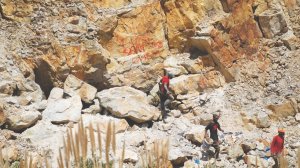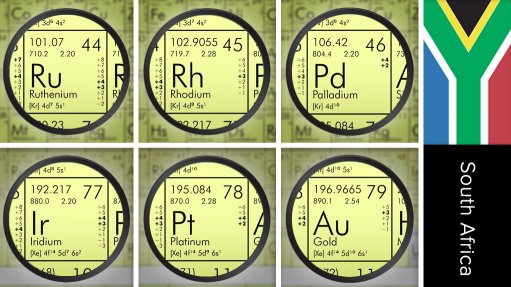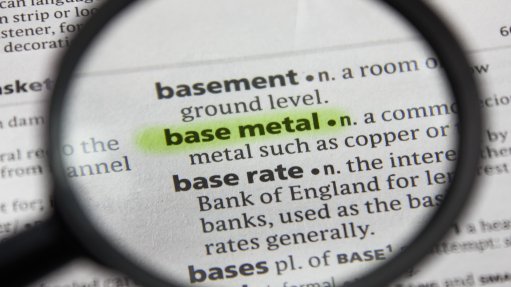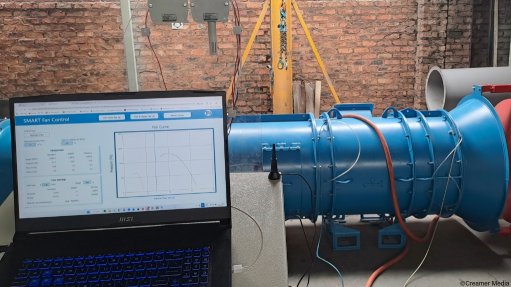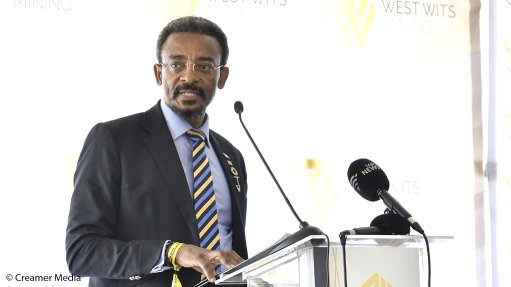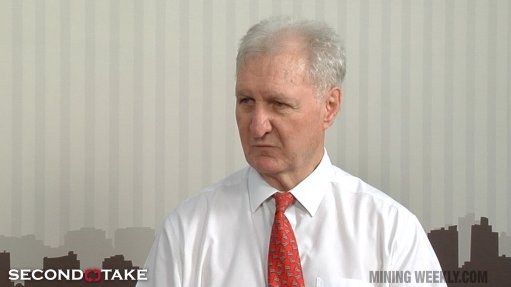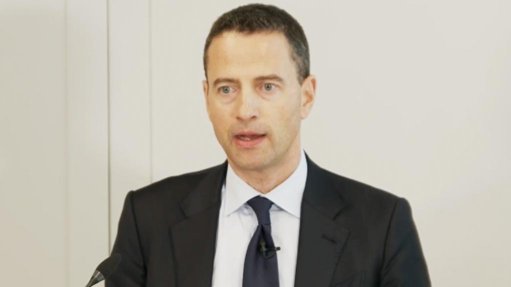Chamber, Parliament pledge support for govt stamp-out of illegal mining by February

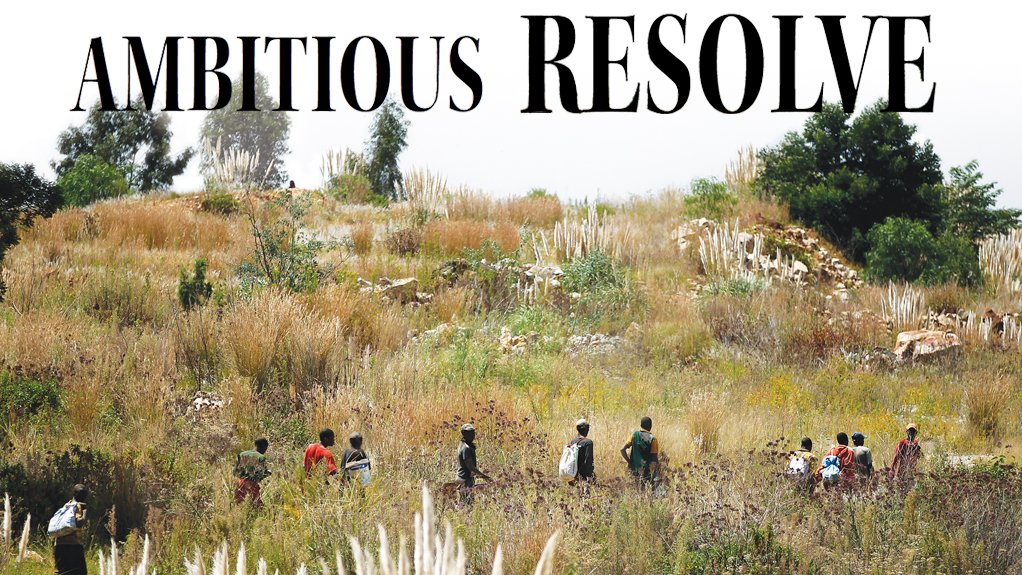


PERSISTENT SCOURGE The Department of Mineral Resources hopes to eradicate illegal mining by February next year
THE BAD GUYS’ TARGET Current estimates by security experts indicate that between 5% and 10% of yearly gold production is being mined illegally
Photo by Bloomberg
While it is unclear whether illegal mining in and around South African mines is on the increase or decrease, Department of Mineral Resources (DMR) Deputy Minister Godfrey Oliphant was quoted in Mining Weekly in September as saying that the department wanted to see “stability” in the fight against illegal mining by this month, in the hope that this would eventually lead to the total eradi- cation of the practice by February next year.
The DMR attributes illegal mining to local and global organised-crime syndicates that mostly take advantage of desperate refugees from neighbouring countries seeking employment.
South Africa’s Chamber of Mines (CoM) legal department head Anton van Achterbergh iterates this, further highlighting that illegal miners, about 70% of whom are illegal immigrants, force their way into mainly old underground mines that have been sealed by government and the respective mining houses.
He tells Mining Weekly that, while it is difficult to quantify the rate of illegal mining in South Africa, the practice is definitely being done more visibly, blatantly and arrogantly than before.
“Illegal miners brazenly undertake illegal mining, even at lawfully operating mines, which puts the health and safety of the mine’s legal employees, as well as that of the host communities and the illegal miners themselves at risk, owing to underground fires, fall-of-ground accidents, violence against employees, security forces, and murder, among other severe consequences,” says Van Achterbergh.
CoM security coordinator Neil Metzer further highlights that illegal miners are often involved in several other illegal activities, including the theft of copper cables, explosives, diesel, machinery and valuable construction materials at surface. They are also often complicit in human trafficking, prostitution, the sale of contraband, and the establishment of an informal banking system and an informal economy.
“These activities often cause unrest in the communities around the mines, in which illegal miners and some mining employees live. A lot of violence can also be attributed to turf wars by rival gangs competing for illegal mining spots,” says Metzer.
Van Achterbergh adds that, while it is important that the actual crime of illegal mining be dealt with, the fight against illegal mining will not be won until all of the contributing factors, such as illegal immigrants, unemployment and South Africa’s socioeconomic situation, are tackled.
Metzer says the law enforcement system needs to be improved in terms of policing, prosecution, immigration and border control.
He believes that gaps in the current strategies to mitigate illegal mining – including differing approaches in tackling the issue; inadequate communication and cooperation among law enforcement agencies, mining houses, community members and other stakeholders; and the Department of Home Affairs’ lack of a more permanent solution to repatriate illegal immigrants – are a significant challenge when it comes to mitigating the scourge of illegal mining.
According to the DMR, a 2007 study estimated that about 10%, or R5.6-billion, of total gold produced yearly was stolen and smuggled out of the country. This does not seem to have changed, as current estimates by security experts indicate that between 5% and 10% of yearly gold production is being mined illegally. These statistics indicate that illicit activities negatively impact on the country’s economy, resulting in a significant loss of revenue for the State and the mining sector.
The DMR tells Mining Weekly that it aims to meet its optimistic February 2015 deadline by implementing the strategies of the collaborative Provincial Illegal Mining Stakeholder Forums, established by former Mineral Resources Minister Susan Shabangu in 2011, to ensure national coordination in combating illegal mining.
At the Mine Occupational Health and Safety Summit, hosted by the DMR last month, Mineral Resources Minister Advocate Ngoako Ramatlhodi called on the tripartite alliance, comprising champions of the mining industry, organised labour and government, to work together with communities around the mines to ensure that the scourge of illegal mining is successfully dealt with.
Parliament’s Portfolio Committee on Mineral Resources also pledged its commitment in September this year to working closely with the DMR, as well as law enforcement agencies and relevant departments and entities to root out and eventually eradicate illegal mining in South Africa.
The DMR-led forums are tasked with continuously identifying and sealing abandoned mine shafts, strengthening security measures in and around illegal mining hot spots, and, through working with law enforcement agencies, conducting successful disruption operations, raids and arrests to ensure successful prosecution of illegal miners and syndicates.
Meanwhile, the CoM has also pledged its commitment to mitigating illegal mining on behalf of and in partnership with its members.
Van Achterbergh believes that the only way to deal with the problem is to focus on both the supply and the demand of illegally extracted minerals by looking at the five levels that compromise an illegal mining syndicate.
These levels include underground workers at level one, buyers on surface around the mines at level two, regional bulk buyers at level three, national and international distributors at level four and international receivers and distributors at level five.
Van Achterbergh says that, while local police and mine security services deal with levels one and two, the CoM, the South African Police Service (Saps), and several other government structures collaborate with international agencies to identify and deal with levels three, four and five.
As part of its efforts, the CoM established a standing security committee, at which the security and asset management heads of all CoM’s members strategise about how to tackle illegal mining and related crimes.
This led to the establishment of the former National Precious Metals Forum in 2001, which was recently absorbed into the National Coordination and Strategic Management Team (NCSMT), which was established in 2009.
The NCSMT consists of representatives from various government departments and law enforcement agencies, including the Saps and industry representatives, including the CoM.
Provincial multi-agency forums also exist in five of the nine provinces and these forums feed into a national multidisciplinary coordinating body to deal with illegal mining across the five syndicate levels.
Gold mining major AngloGold Ashanti spokesperson Chris Nthite tells Mining Weekly that, while AngloGold has certainly noted media reports of illegal mining activities, the careful securing of entrances to its operational sites, mostly located on the Johannesburg’s West Rand, has worked fairly well thus far.
AngloGold’s security systems, including technology used to monitor who goes underground, have also ensured that the company mitigates the risk of illegal mining.
Despite these measures, however, Nthite notes that illegal mining requires closer attention from all industry stakeholders to ensure that they are able to prevent the obvious safety, social and environmental risks that result from illegal mining.
Also on the West Rand, gold mining major Harmony Gold’s Kusasalethu mine was closed for two weeks between October 31 and November 12, as CEO Graham Briggs took a stance against the scourge of illegal miners after a fire – the third one to break out during October – threatened the health and safety of mineworkers.
Harmony decided to close the mine while efforts to remove all illegal miners and complete all enhanced security and access control measures were under way.
Mining Weekly reported in October that Harmony, which was consulting with organised labour and regulatory authorities, was implementing increased security and improved clocking-in systems to tighten control on who enters and exits its mines. Harmony also conducts regular inspections of closed sections of the mine to ensure that they remain sealed off and cannot be accessed illegally.
Briggs said it was clear that illegal mining was a threat to employees’ safety and health, and to the mine’s continued viability.
As a result of Harmony’s efforts, 105 illegal miners were arrested and about 25 employees, who were complicit in illegal activity, were subject to disciplinary action.
Meanwhile, gold miner Gold One and its gold exploration subsidiary Goliath Gold Mining, which operate on Johannesburg’s East Rand, have experienced a definite decrease in surface and underground illegal mining, compared with last year, says Gold One group asset protection and security manager Boats Botes.
He believes the increased visibility of security forces, which scout the premises and monitor all operations and properties, has been the biggest combatant of illegal surface mining. Botes further credits the decrease in illegal underground mining to the mine’s closing off all known holes and disused mine shafts on its properties.
He adds that the rising water level in the East Rand basin is also a deterrent to illegal miners, as many of the historic shafts they are using are flooding. “The rising water affects ventilation in the abandoned shafts, making it harder for the illegal miners to operate there,” he explains.
The East Rand Illegal Mining Forum, of which Gold One is a member, has also gone a long way to coordinate efforts to combat illegal mining, which seems to be on the decrease as a result.
Botes believes that the stakeholder engagement provided by the forum, which comprises mining houses operating on the East Rand, the Saps, the Ekurhuleni Metro Police, the Ekurhuleni Emergency Services, the National Prosecuting Authority, and the DMR, among others, can help successfully eradicate future potential illegal mining on the East Rand.
Metzer adds that, going forward, a universal approach is needed to provide a global, legal and operational framework of understanding and cooperation between the mining industry, government, the community and law enforcement to effectively deal with illegal mining and the criminal links between illicit trafficking in precious metals, other organised crime and the financial support of criminal and terrorist activities at local, regional and global levels.
“Global support is crucial and we need to identify the global weaknesses in legislation and control systems and fix this,” he concludes.
Article Enquiry
Email Article
Save Article
Feedback
To advertise email advertising@creamermedia.co.za or click here
Announcements
What's On
Subscribe to improve your user experience...
Option 1 (equivalent of R125 a month):
Receive a weekly copy of Creamer Media's Engineering News & Mining Weekly magazine
(print copy for those in South Africa and e-magazine for those outside of South Africa)
Receive daily email newsletters
Access to full search results
Access archive of magazine back copies
Access to Projects in Progress
Access to ONE Research Report of your choice in PDF format
Option 2 (equivalent of R375 a month):
All benefits from Option 1
PLUS
Access to Creamer Media's Research Channel Africa for ALL Research Reports, in PDF format, on various industrial and mining sectors
including Electricity; Water; Energy Transition; Hydrogen; Roads, Rail and Ports; Coal; Gold; Platinum; Battery Metals; etc.
Already a subscriber?
Forgotten your password?
Receive weekly copy of Creamer Media's Engineering News & Mining Weekly magazine (print copy for those in South Africa and e-magazine for those outside of South Africa)
➕
Recieve daily email newsletters
➕
Access to full search results
➕
Access archive of magazine back copies
➕
Access to Projects in Progress
➕
Access to ONE Research Report of your choice in PDF format
RESEARCH CHANNEL AFRICA
R4500 (equivalent of R375 a month)
SUBSCRIBEAll benefits from Option 1
➕
Access to Creamer Media's Research Channel Africa for ALL Research Reports on various industrial and mining sectors, in PDF format, including on:
Electricity
➕
Water
➕
Energy Transition
➕
Hydrogen
➕
Roads, Rail and Ports
➕
Coal
➕
Gold
➕
Platinum
➕
Battery Metals
➕
etc.
Receive all benefits from Option 1 or Option 2 delivered to numerous people at your company
➕
Multiple User names and Passwords for simultaneous log-ins
➕
Intranet integration access to all in your organisation



